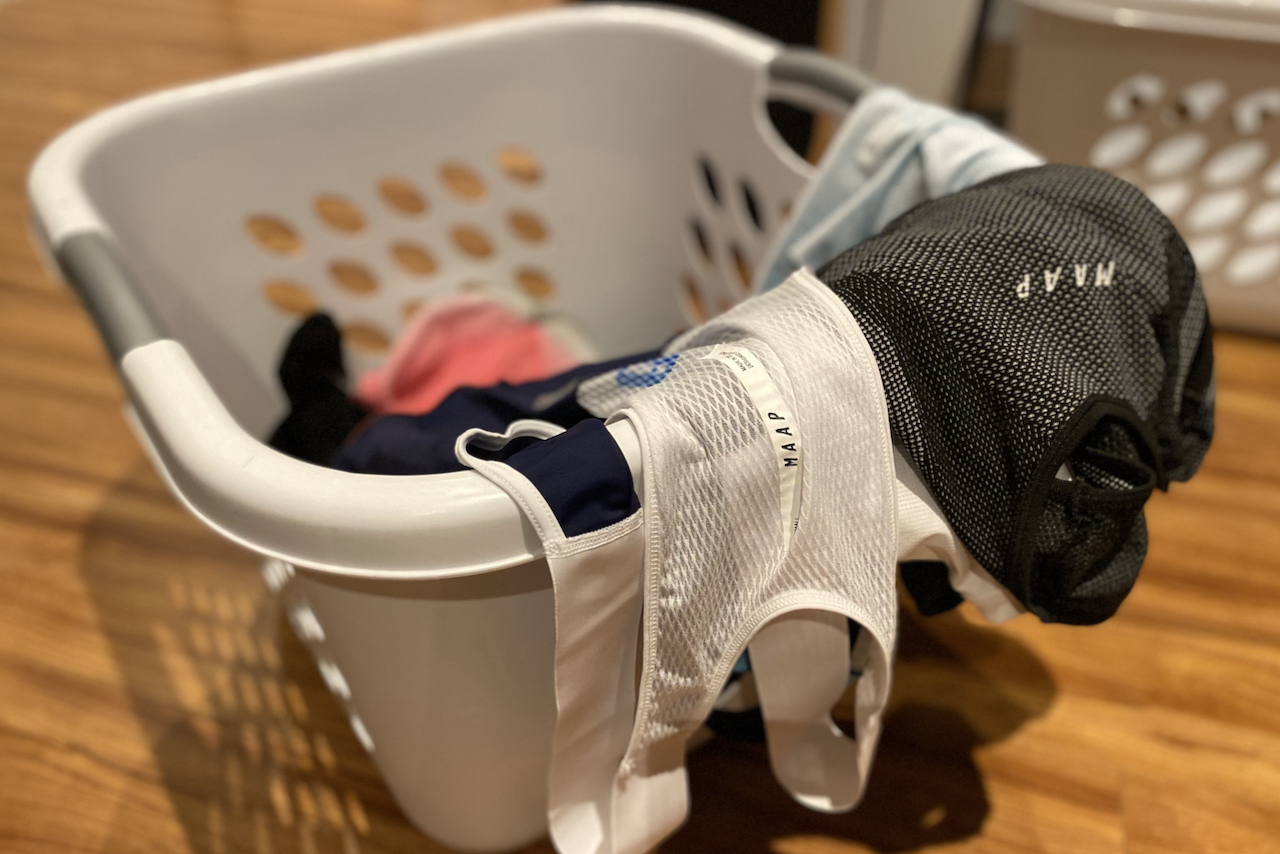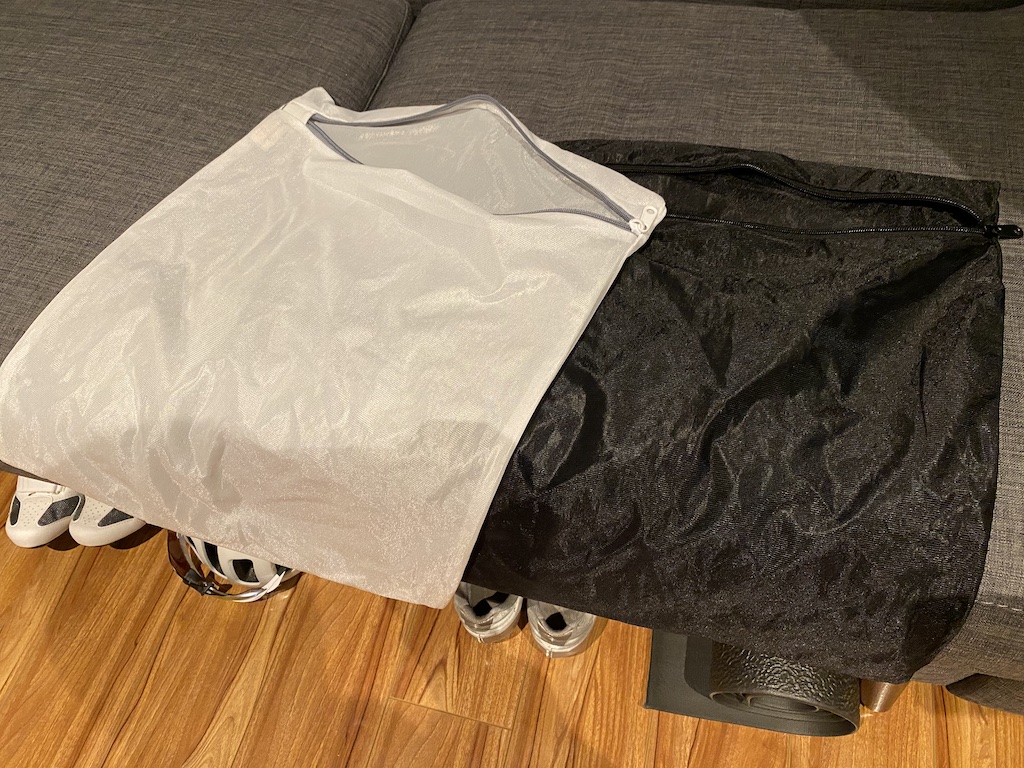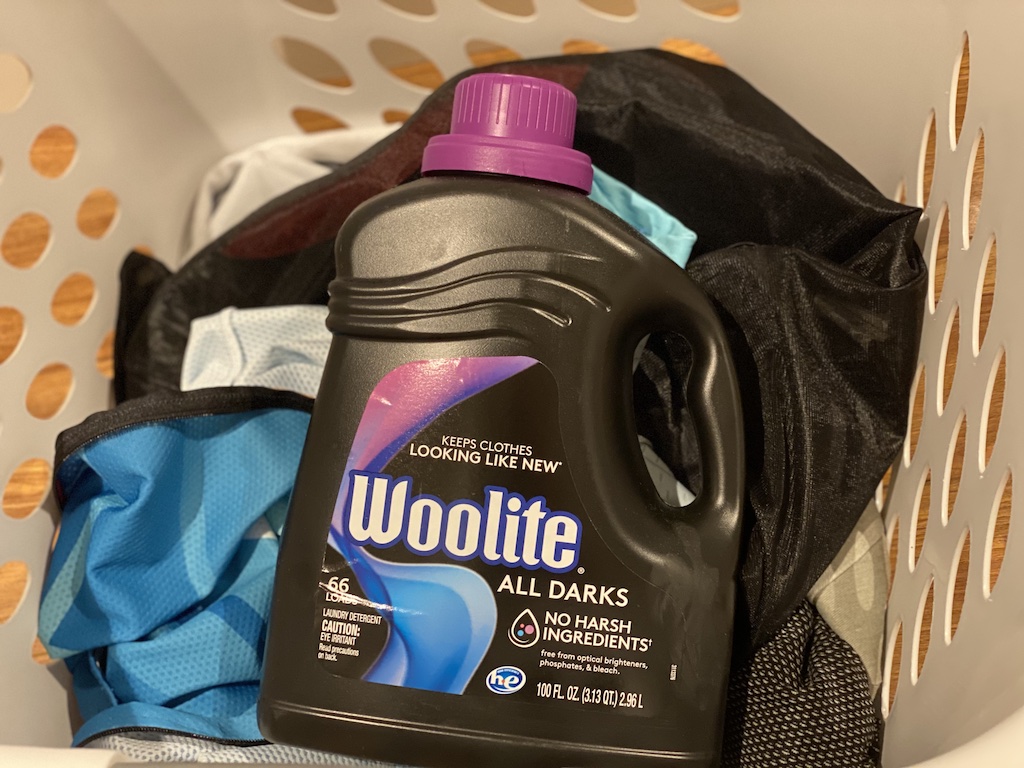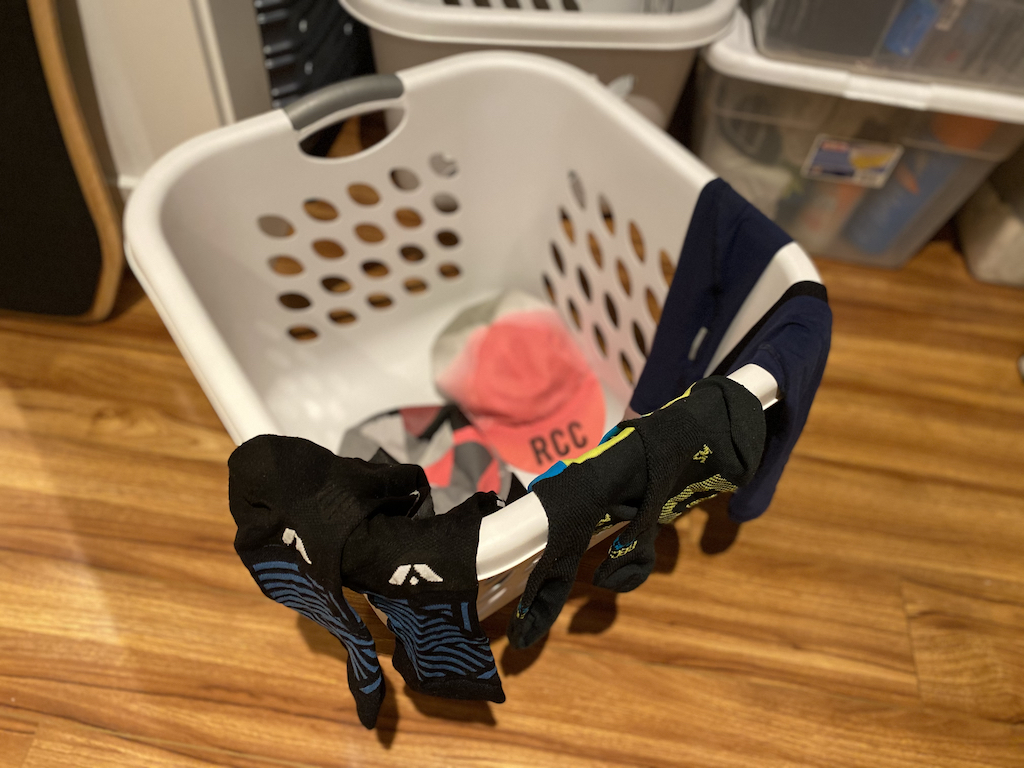
7 Minute Read

7 Minute Read
Earlier this evening, I went out for a ride up north, around a portion of the loop that I really like to do here in San Mateo. When I got home, I realized that I had laundry to do. Surprise, surprise, right?
And given that I recently wrote about what cycling clothes to buy, I thought it’d be good to write something short about how I keep mine clean.
Take good care of them and they’ll take good care of you! Keep them clean and ready to go, and you won’t run into (hopefully) too many issues with the pad prematurely wearing out, zippers coming off, seams tearing, or edges curling.
Unfortunately, life happens, we all get busy, and we ignore these kinds of things. It can get costly to replace these clothes, or perhaps just frustrating if you ruin a jersey that you really like that is no longer being made.
Most all cycling clothing specifically says on their label that they recommend to “hand wash only.” Well, that’s just tedious, isn’t it?
While that certainly is the “gold standard” here, if there ever was one, I’ve not really found any difference between hand washing these clothes versus just using a reasonably okay washing machine. Especially if you factor in the sheer amount of time it takes one to hand wash these clothes!
I much, much, much rather prefer a front loading machine.

What makes these nice are that they use very little water, and, more importantly, wash your cycling clothes really well. They also don’t have an agitator, meaning that small or delicate things aren’t going to get caught up and tangled around inside.
That’s okay, too, but you’ll need some of these if you use any cycling bib shorts:

Luckily, they’re pretty cheap, and you can reuse them a ton of times. I got these on Amazon a while back when I moved into my new place.
You put your dirty cycling bib shorts, inside out, inside these, zip them closed, and then toss the whole thing in the wash. Simple as that! A lot of people do this with delicates as a general rule of thumb, so this may already be a no-brainer.
These laundry bags are important because the bib portion of the bib shorts can get caught up and tangled around the agitator inside a top-loading washing machine. This could spell doom for your bib shorts!

You can find expensive laundry soaps, specifically made by cycling clothing companies. They can get expensive, mainly because they cost about the same as a regular laundry container, but give you something like, a quarter of the important stuff inside.
In all honesty, I only use Woolite Darks laundry detergent. It’s optimized for cold water, it comes in a big bottle, it’s relatively cheap, and it works very well in my experience. Sometimes you can find this at Costco, actually, in some monstrous container, too!

What’s also awesome about Woolite is that they offer a special travel pack of several, individual packets of regular Woolite (still good). I’ve used these while traveling and they’re wonderful! They’re currently listed as not available on Amazon (no idea why), but there does seem to be nearly identical kit from another brand that you could try if they’re not available. The kit also provides a rubber stopper specifically for a sink, which is super handy.
Maybe also pick up a laundry bag that’s designed for travel, too. While it was expensive, I did get a Scrubba Portable Wash Bag before my last big trip. I actually used it more as a regular bag to store my clothes in, but it also did work very well to keep water in to wash clothes directly inside it instead of standing over the sink for a long time (something else I’ve done and don’t enjoy).
This is typically how all the tags and labels will recommend you to wash your cycling clothes, so it’s best to stick to it to be safe. I actually have an option on my machine for a “pre soak” that I like to use as well. If you somehow ruin your clothes while adhering to the recommendations on the tags, you’re more likely to get support from the company. Often they will work with you to keep you happy and provide you either a replacement or a discount on a new item. Don’t be afraid to ask!
I did it once with Maap. Somehow the tag on my very bright red jersey bled into the red fabric. I reached out to them directly, and while they weren’t really able to do much for me, they at least were responsive and offered a few solutions in a situation that certainly bothered me.
When I was in France in 2019, we had a small little front loader washing machine in the kitchen. I was warned about it being tricky to use, but it did indeed work. I bring it up here because no matter what setting I used, the water it used was very warm. I remember being extremely nervous about all my expensive cycling gear in there, but shockingly enough, everything seemed to be just fine. So your mileage will vary, as always.
Seems like a no-brainer, but it’s something I know I’m guilty of. Definitely don’t want to leave those sweaty cycling clothes balled up in a corner. The pads on the bib shorts may be antimicrobial (usually), but at some point it’s just going to do lasting damage on them.

Another recommendation I see on a lot of my clothing is to specifically wash them inside out. It’s especially the case with the bib shorts! Jerseys, not really so much. I tend to wash mine just open, unzipped, and I haven’t really had any issues.
Typically, the official recommendation is to zip up the jerseys inside out, too. Again, up to you. Just read the tags. Luckily, once you’ve done this once or twice, you’ll never really need to re-learn it!
Basically mandatory. These clothes are made of all kinds of lycra, spandex, foam, and polyester, so any kind of unusually warm heat element from a dryer is going to damage its integrity. Just hang them up to dry somewhere.
I definitely recommend getting a hanging drying rack if you feel like you can use it for other things, or if you don’t have a ton of space in your closet. I tend to hang my bib shorts and jerseys in my closet with some space around them overnight, while I drape things like arm warmers and socks over the sides of my laundry basket.

Just do whatever makes you comfortable.
Unfortunately there are a lot of cyclists out there who, for whatever reason, never realize when their bib shorts or jersey are going by the wayside. Perhaps they’ve just been used too many times. Maybe they have a crappy washer at home. Who knows.
At some point, your clothes will need to be replaced. You can see this with stretchy clothes, specifically of the cycling variety, mostly when you start to see lighter fabric as things get thinner or get stretched too thin.
Or perhaps you’ll start to see other things. Things that others don’t want to see!

Remember that clothes don’t have to have actual holes in them before they need to be replaced! This is especially the case with technical gear.
I suppose the old adage here bears repeating. Cycling clothing is changing all the time, and if you stick with the hobby, new styles will eventually fill your closet. Just remember to keep them all clean and ready to go, and they will serve you well.
Perhaps they’ll even aid you in losing weight by riding so much. So much that you’ll need to purchase newer clothes because all your old ones are now too big.
An amazing problem to have, isn’t it?